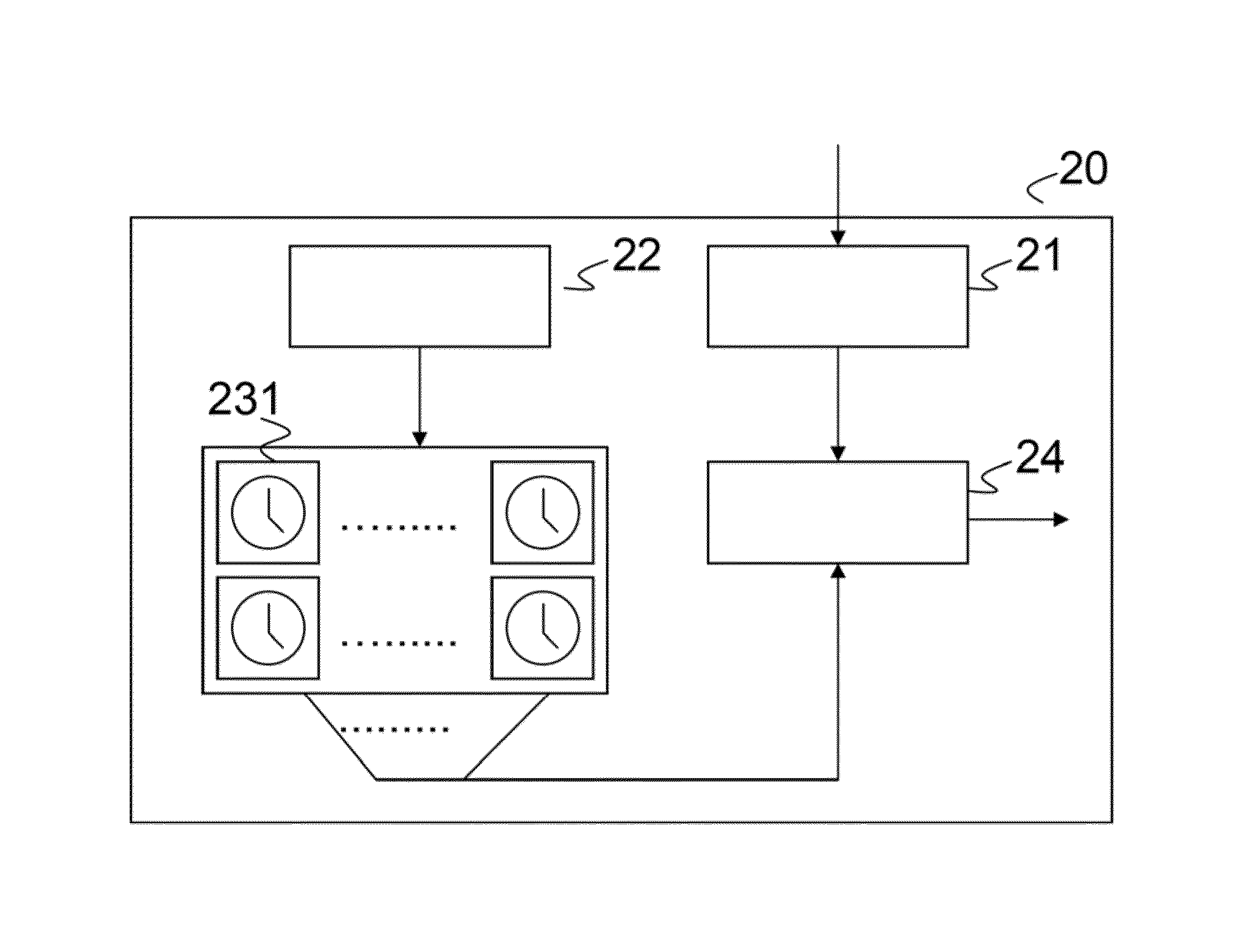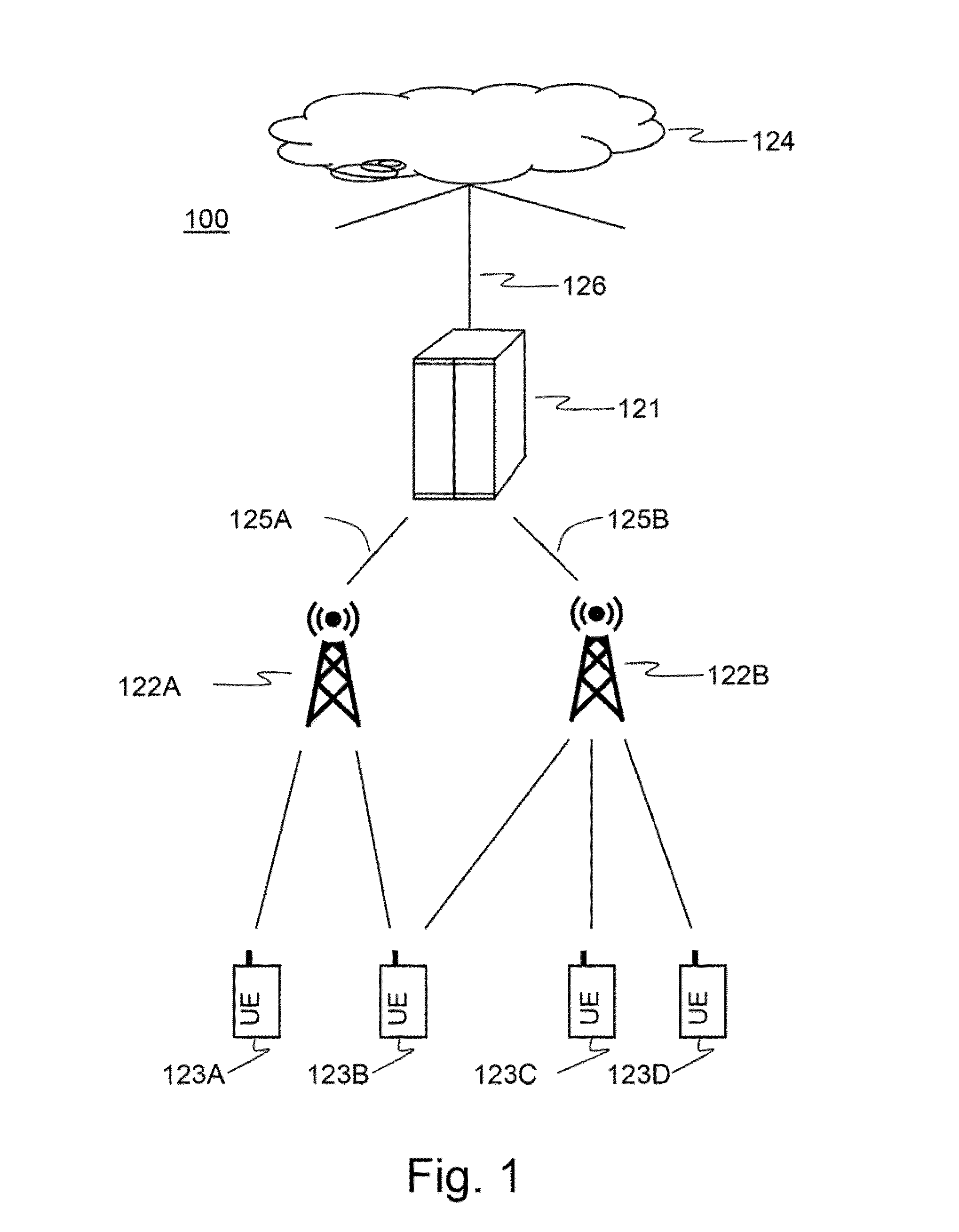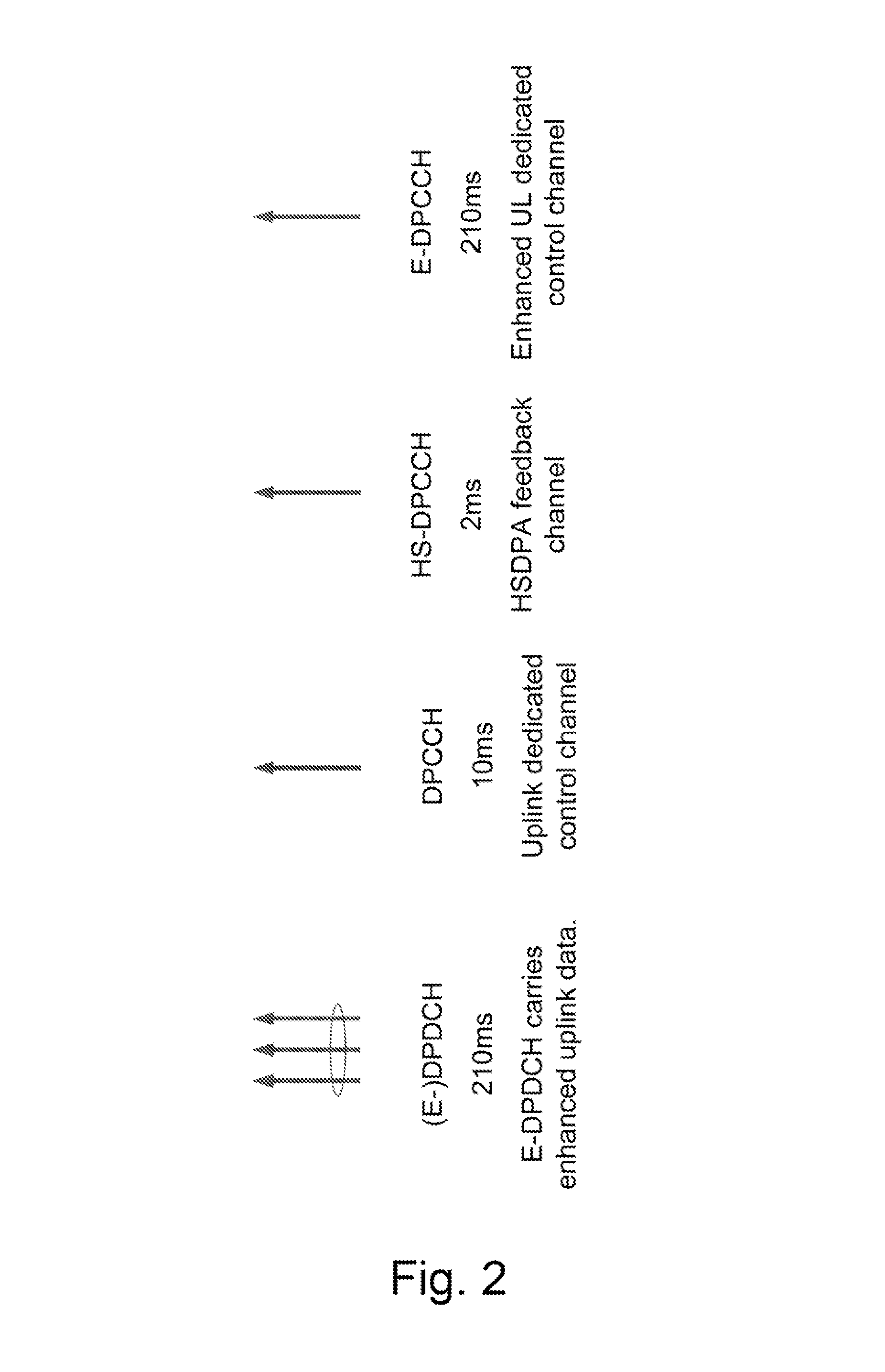Method and arrangement for activity detection in a telecommunication system
a telecommunication system and activity detection technology, applied in the field of methods and arrangements in the 3rd generation telecommunication system, can solve the problems of node b transmit power limitation, code shortage, frequent and error-prone signalling, etc., and achieve the effect of simplifying the coordination of transitions
- Summary
- Abstract
- Description
- Claims
- Application Information
AI Technical Summary
Benefits of technology
Problems solved by technology
Method used
Image
Examples
first embodiment
[0023]In the present invention the applied rule relates to a reduction in the reporting of the channel quality information (CQI): This rule bases on the criterion that there has not been any activity on the High-Speed Downlink Shared Channel (HS-DSCH) for a particular user equipment for a certain time, which is indicated by the fact that a timer 331 or 332 CQI_DTX_Timer has expired. By help of a means 32 for transmission activity detection the user equipment will notice whether it has been recently scheduled or not, providing an indication about the downlink activity on the HS-DSCH and, as a consequence, whether the user equipment shall use a ‘normal activity mode’ or a ‘reduced activity mode’ for its uplink CQI reporting. According to the rule implemented in the user equipment 30 and the Node B 20, the user equipment 30 then initiates an adapted CQI reporting on the uplink, i.e. the High-Speed Dedicated Physical Control Channel (HS-DPCCH). For instance, the user equipment starts to...
second embodiment
[0028]the present invention relates to uplink gating of the Dedicated Physical Control Channel (DPCCH): This rule bases on the criterion that a means 22 has detected that there has not been any activity on the E-DCH for a particular user equipment 30 for a certain time, i.e. the user equipment 30 has currently no data to transmit on the uplink. This time can be expressed either by help of the TTI, e.g. 1TTI, or by help of a timer 231 having value Inactivity_Threshold_for_UE_DTX_cycle_2. According to the rule implemented in the user equipment 30 and the Node B 20, the user equipment 30 will then apply a gated uplink transmission, denoted by a cycle time UL DTX_cycle—1 or, if there is still no E-DCH activity after an even longer time, a second cycle time UE_DTX_cycle_2, which is longer than the first cycle time. A gated transmission implies that transmissions are performed at full power but not in every slot. For instance, when only using every 4th transmission slot this would lead to...
PUM
 Login to View More
Login to View More Abstract
Description
Claims
Application Information
 Login to View More
Login to View More - R&D
- Intellectual Property
- Life Sciences
- Materials
- Tech Scout
- Unparalleled Data Quality
- Higher Quality Content
- 60% Fewer Hallucinations
Browse by: Latest US Patents, China's latest patents, Technical Efficacy Thesaurus, Application Domain, Technology Topic, Popular Technical Reports.
© 2025 PatSnap. All rights reserved.Legal|Privacy policy|Modern Slavery Act Transparency Statement|Sitemap|About US| Contact US: help@patsnap.com



